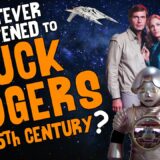Update 12:11 pm est 1/25/16 see below for additional information.

- File Size: 2143 KB
- Print Length: 542 pages
- Publisher: Avery; 1 edition (August 25, 2015)
- Publication Date: August 25, 2015
Steve Silberman’s NeuroTribes: The Legacy of Autism and the Future of Neurodiversity is a fairly dense yet interesting and very compelling history of the identification of autism, the consequences of geopolitics on science and medicine, multiple case studies of interesting and influential individuals, a treatise on diversity and a history of the science fiction field.
Autism and Asperger’s Syndrome (named for one of the protagonists) were originally diagnosed as a mental disorder of children (adults with similar disorders were diagnosed as “feeble-minded” or “schizophrenic”), though Silberman’s investigation has revealed that our present day treatment is largely a legacy of the fact that Asperger, the pioneering investigator, was headed towards a much less negative view of the syndrome, seeing it (eventually) as a different way of thinking as opposed to a mental illness.
The entire book is utterly fascinating, from the history of Asperger’s career and identification of the syndrome in pre-World War II Germany, to struggles with the NAZI German state over eugenics, sterilization and extermination, to Leo Kanner’s near simultaneous identification and how Kanner’s more limited view became the prevalent view; of how bad science contributed to the association of childhood vaccinations with a rise in the diagnosis of autism; through case studies of famous thinkers through the ages who probably fell somewhere on the Asperger’s spectrum; of the seeming correlation between the apparent increase in autism and the increasing number of scientists and engineers meeting and having children.
Silberman makes a very strong case for the concept of neurodiversity – the idea that autism and aspergers are not so much disabilities as they are normal neurological conditions that are a consequence of variations of the human genome; based in Asperger’s theory that neurologically diverse individuals can be (usually are) highly functioning individuals who perceive and communicate with the world around them in different ways, and that this neurological diversity is an asset.
Nowhere in Nuerotribes does Silberman make his case more strongly than his chapter on Science Fiction fandom.
He begins that chapter with a quote from John W. Campbell. In the opening paragraph, he makes a connection between the thought processes of autistic individuals and the meat-and-potatoes of science fiction:
Asperger may have been the first clinician to notice that his patient’s imaginations occasionally anticipated science by decades, forcing him to amend his statement that the interests of his little professors were “remote” from real world concerns.
He goes on:
For many people on the spectrum in the years that they were invisible to medicine, science fiction fandom provided a community where they finally felt like savvy natives after years of being bullied and abused by their peers for seeming naive, awkward and clueless. Another community that enabled autistic people to make the most of their natural strengths in the early and mid-twentieth century was amateur radio.
Amazingly, both of these communities were launched by the same man who was likely on the autism spectrum himself; a visionary entrepreneur named Hugo Gernsback….As Gernsback became wealthy, he cultivated the air of a bon vivant, packaging himself…But he inevitably struck people as odd, rude, self-centered and even callous…He would terrify [his cousin] by launching into windy soliloquies about a society in which domed cities in orbit, robot doctors and retirement communities on Mars were commonplace.
A brief biography of Gernsback, his magazines, writing (Ralph 124C41+) and his association with Tesla follows, prior to the advent of science fiction fandom – an outgrowth of Gernsback’s desire to grow the market for what he had become passionate about.
He name checks a few fans who went on to wider notoriety – Asimov, Bradbury, Brackett, Ebert, and then makes this observation:
Fandom tapped into a deep yearning to rise above the circumstances of humdrum existence and become part of something noble, deeply informed and not widely understood. The thrill of being part of something that few people could appreciate was particularly keen for those who had spent their lives being ridiculed. No one could make you a fan – or prevent you from becoming one – but yourself and no one could judge you but your peers of choice; your fellow “fen”. Early fans indulged these feelings of confidence and superiority to the hilt, referring to the clueless nonfans who ran the world as “mundanes”.
Unlike cult followings based on sports teams or rock stars, science fiction fandom was rooted in an essentially solitary activity: reading. Traits typically viewed as pathological or pathetic in the mainstream … were rewarded in the community as signs of “trufan” commitment.
van Vogt’s Slan is name-checked and Claude Degler is offered up as an example of the concept that fans were Slans! Indeed, many of them were mutants, of the neurodiverse kind.
The chapter concludes by following fans and fandom into the 20th century (hacker society’s roots in fandom, for example) and uses fannish society and culture to illustrate what a high-functioning, neuro-diverse community would look like.
I’ve long known that fandom was a special place, filled with special people, many of whom thought in strange and interesting ways (not to mention those who did strange and interesting things). I take it as a point of pride that Fandom was used as the example of how a community of many people, many of whom not only look and act differently than their mainstream counterparts but think differently, is the exemplar of the theory that autism and asperber’s is not a disability, but the expression of the range of normal neurotypes – and that this class of people – misunderstood, ridiculed and ostracized, found a way to impact society in ways that “normal” people could never have imagined.
There’s a lot to read in Silberman’s Neurotribes – it is a grand compilation of history, politics, societal change and a strong advocate for acceptance and openness, as well as a strong argument against the assumption that anything different is necessarily wrong or bad. Different can be different, and sometimes, different can change the world.
***
I just discovered that the author, Steve Silberman, was interviewed on PBS a couple of days ago. Here is a link to that interview











1 Comment